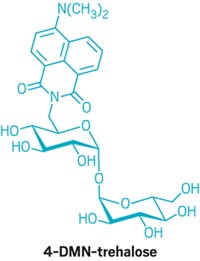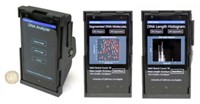Advertisement
Grab your lab coat. Let's get started
Welcome!
Welcome!
Create an account below to get 6 C&EN articles per month, receive newsletters and more - all free.
It seems this is your first time logging in online. Please enter the following information to continue.
As an ACS member you automatically get access to this site. All we need is few more details to create your reading experience.
Not you? Sign in with a different account.
Not you? Sign in with a different account.
ERROR 1
ERROR 1
ERROR 2
ERROR 2
ERROR 2
ERROR 2
ERROR 2
Password and Confirm password must match.
If you have an ACS member number, please enter it here so we can link this account to your membership. (optional)
ERROR 2
ACS values your privacy. By submitting your information, you are gaining access to C&EN and subscribing to our weekly newsletter. We use the information you provide to make your reading experience better, and we will never sell your data to third party members.
Diagnostics
Computer’s Heat Sink Used To Slash Cost Of PCR
Medical Diagnostics: Researchers harness heat from inside the guts of a computer to run a blood test for Chagas-causing parasite
by Katharine Sanderson
September 2, 2014

While people sit at their computers and watch movies or browse the Internet for cat videos, the processor chips in their machines generate heat. Now researchers have harnessed that heat to run the polymerase chain reaction (PCR) inside a computer. The method allowed them to detect miniscule amounts of DNA from a pathogenic parasite, and could lead to low-cost diagnostic tests in developing countries (Anal. Chem. 2014, DOI: 10.1021/ac5022419).
Researchers in H. Tom Soh’s lab at the University of California, Santa Barbara, developed software to cycle the temperature of a desktop computer’s central processing unit (CPU) to drive PCR’s three distinct steps. The team used the CPU as part of a test for the often difficult-to-diagnose Chagas disease, which is caused by the parasite Trypanosoma cruzi.
To test for the parasite’s DNA, the team adds an infected blood sample to a capillary tube preloaded with the PCR reagents and a fluorescent dye that complexes with DNA. The researchers also add dimethyl sulfoxide to the reagents to lower DNA’s melting temperature: To denature the DNA for PCR without this solvent, temperatures would need to reach 95 °C, which is too hot for a computer. They then place the tube in the fins of the CPU’s heat sink and run their temperature cycling program. The process amplifies the T. cruzi DNA, which is labeled by the fluorescent dye. The researchers use a cell phone app to quantify the amount of DNA based on the intensity of the glow of the tubes.
Using this method, they could detect as little as 0.1 femtogram/L of T. cruzi DNA, which is well below the threshold that leads to Chagas disease.
In addition to the computer and cell phone, the equipment and reagent costs for this new method are $41.50, far less than standard PCR equipment that costs about $19,000. The team hopes their low-cost method will allow diseases such as Chagas to be better monitored and treated in the field.





Join the conversation
Contact the reporter
Submit a Letter to the Editor for publication
Engage with us on Twitter